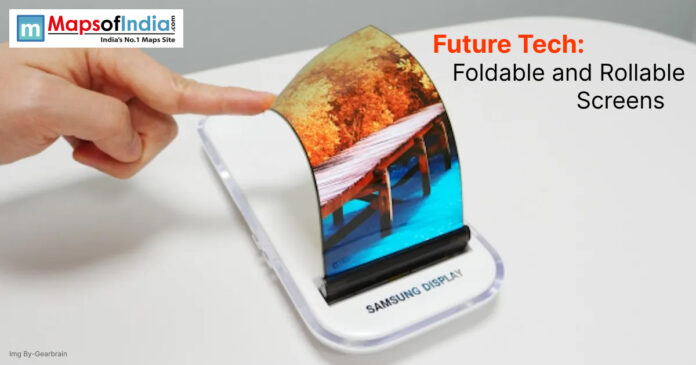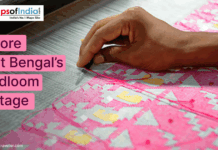Introduction
Technology is evolving very fast these days, and one of the best developments in recent years is the appearance of foldable and rollable screens. With such innovations, our devices may be used for many new tasks, can be taken anywhere, and will be much easier to work with. If you take a smartphone and unfold it, the screen would become a tablet. Similarly, a laptop screen could stretch sideways to provide more space to use. Most of these advancements have gone from fiction to actual achievements, influencing our thoughts on portable devices.
This blog looks at the development of foldable and rollable screens from the beginning, their uses today, problems they still face, and the significant difference they could make for our future.
The Evolution of Display Technology
From Rigid Screens to Flexibility
Foldable and rollable screens became a goal when people wanted to make displays more involving and easy to carry. In the past, the rigid screens used for LCDs or OLEDs didn’t offer much flexibility, even though they gave excellent results. As people began using small gadgets for many tasks, companies started finding new materials and concepts to design them.
Through flexible OLED technology, screens appeared that could bend even without breaking. It laid the starting point for today’s cool foldable and rollable screens.
Foldable Screens: A New Frontier
What Are Foldable Screens?
OLED screens covered with flexible materials make it possible for the display to bend or fold in a smooth crease. As a result, you can switch from a small phone to a bigger tablet-sized display in no time. Foldable phones are becoming popular since they unfold, giving you more space to use for your favorite activities.
The Rise of Foldable Smartphones
The best brands in the industry have made important advancements in foldable smartphones. In the beginning, designers of laptops encountered issues with screen durability, the way the hinge worked, and running software smoothly. Nevertheless, companies adjusted their designs very soon after the incident. Currently, foldable phones have sturdy hinges, thinned glass, and operating systems that adapt to the new screen styles without problems.
A good thing about foldable phones is that they let you use your phone or use its tablet screen for a bigger and better display. It is most attractive to users who want to use only a single device, but are required to use the phone in different ways.
Foldable Laptops and Beyond
The same foldable technology is used in more applications than phones. A number of laptop manufacturers are thinking about using foldable screens to cause a standard-sized laptop to unfold into something bigger. This way of working is great for users who require their devices to expand as they handle large projects, design, and several tasks at the same time. With better technology coming, we might soon see the use of foldable screens in other types of devices, for example e-readers and gaming consoles.
Rollable Screens: Expanding Possibilities
What Are Rollable Screens?
These screens go beyond other phones by being flexible. The display moves out or in using motors instead of being folded through a hinge. Consider a phone that easily unfolds into a tablet or a laptop that grows in height whenever an extra workspace is required.
The Promise of Rollable Devices
These screens are attractive since they do not have the crease or fold line that common foldable devices have. Moreover, they let you continue browsing on the main surface without any breaks. Some companies are creating rollable technology that works with smartphones, laptops, and even TVs that can be stored as a small box when not being used.
Early Examples and Concepts
Even though rollable screens are in their first phase, certain prototypes and conceptual devices have already been introduced at expos. This shows that rollable displays have the ability to make our devices simple to adapt and use as needed.
Benefits of Foldable and Rollable Screens
Portability Meets Productivity
These kinds of screens are especially practical because they allow you to work well on the move. A smartphone that can bend allows you to work on it during regular hours and enjoy video or reading on it at night. A flexible laptop screen can be stretched out to add extra workspace for several tasks or work, and it can be retracted for traveling with ease.
Multi-Functionality
Users do not have to use many devices because they do so much. Instead of taking both a phone and a tablet or a laptop and a monitor, users can just use a single device that can be used for many tasks. It helps our backpacks become lighter and simplifies all the processes in the digital field.
A Glimpse of the Future
Having these devices eliminates the necessity to carry several gadgets around. People can save space by simply relying on a single device that changes according to the situation. It helps us carry less gear and also makes our digital space less complicated.
Challenges and Considerations
Durability Concerns
An important problem for these kinds of screens is their durability. Many of the first models often developed creases, the hinge would wear out, and the screens would get scratched. Even though major improvements have been made, the technology is still getting better. People who use their goods often should be careful about signs of wear and tear.
Software Optimization
A flexible screen needs software that can smoothly handle all adjustments in screen size and orientation. Therefore, the programs inside your device should be able to react immediately to your needs. Progress has certainly happened, though software optimization is not yet complete, as a few apps do not work smoothly with these formats.
Cost and Accessibility
Now, foldable and rollable devices are expensive compared to usual phones or laptops. Productivity is going up as technology progresses, so the prices of these devices are expected to decrease in the future, but presently, they are too expensive for most people.
The Road Ahead: What to Expect
More Affordable Devices
When manufacturing processes get better and competition rises, it is expected that foldable and rollable devices will become cheaper. It will make it possible for more people to use these new developments.
Integration into Various Sectors
As well as consumer electronics, foldable and rollable screens may be useful in cars, smartwatches, and medical gadgets. Imagine that doctors can access patient records on rollup screens while making rounds and drivers get more information by using a foldable dashboard on long routes.
Enhanced User Experiences
The coming foldable and rollable devices will probably improve their hinges, build tougher screens, and update their software. As a result, users receive a better and more trusted performance, so these tools turn out to be quite useful.
Conclusion
This new feature marks a big change in the world of portable devices. They make work less demanding by making things easier and highlighting the gains we get from technology that fits better with us.
Even though problems with durability and cost have not been solved, recent advances in solar are hard to deny. With every updated design and a rise in software, foldable and rollable gadgets are expected to be a big part of our technological future.
No matter if you’re a businessperson, a creative person, or a fan of technology, you’ll find foldable and rollable screens interesting. As soon as these devices improve further, they will become just as common as our current phones and computers.
Therefore, you should keep up with these changes, as the way portable devices develop is unfolding for us to see.




